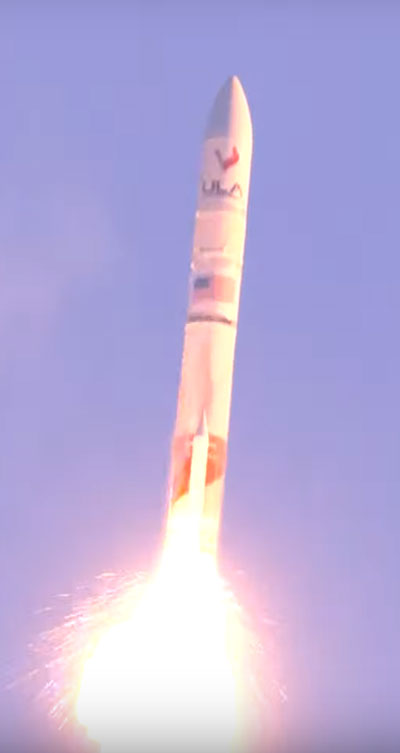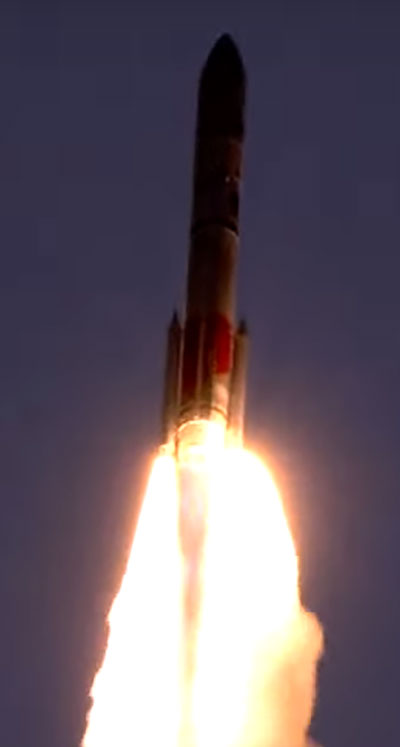 Space News space history and artifacts articles Messages space history discussion forums Sightings worldwide astronaut appearances Resources selected space history documents |
If you have previously registered, but forgotten your password, click here.
| ||||||||
| Robert Pearlman | From United Launch Alliance (ULA): To recap, the United launch Alliance rocket departed Space Launch Complex-41 at 7:25 a.m. EDT. | |||||||
| oly | It appears one of the solid boosters experienced an issue. It seems that a large amount of debris was shed from the booster during operation. | |||||||
| Blackarrow | That ULA statement seems to have been very carefully contrived, indicating that "...at T+2m14s both SRBs jettisoned as planned." It's obviously true that they jettisoned, and the action of SRB jettison was obviously planned, but was it really the case that SRB jettison was planned to be at T+2m 14s? According to the clock on the video, I suggest that jettison was actually at T+2m 10s which makes the ULA statement seem oddly imprecise for the world of "rocket science." But a more important point arises from a comparison between the first Vulcan certification flight and this second test. During both tests, the SRB "burnout" calls were at the same time (T+1m 27s). On Cert. 1, the boosters visibly separated at T+ 1m 50s. It's reasonable to ask why SRB jettison took place a full 20 seconds later on Cert. 2 compared with Cert. 1. Is SRB jettison automatic, or can it be delayed manually (and if so, why)? It is also pretty obvious, comparing both launches, that one of the Cert. 2 SRBs had a problem. The SRB plumes were definitely asymmetric, and sparks and debris were seen. Could the SRB exhaust nozzle have fractured or melted through? | |||||||
| GACspaceguy | I saw this SRB anomaly and noticed the asymmetric plume. Also, the commentator announced SRB sep should be occurring but it was noticeably delayed. An indication of some sort of off nominal performance? | |||||||
| Robert Pearlman | ULA CEO Tory Bruno acknowledged on X that an anomaly occurred but it did not prevent Vulcan from reaching its intended orbit. He also noted that the cause was still unknown. Bullseye chart coming. I imagine some of you are especially curious: orbital insertion was perfect.An update from Bruno on X: Nozzle anomaly. Case and grain fine. Reduced, asymmetric thrust. Compensated for by booster. | |||||||
| Blackarrow | On reflection, this launch provided a far better test of the Vulcan Centaur's capabilities than a completely nominal launch. It reminds me a little of Apollo 6, which made it into orbit in the most trying circumstances. On yesterday's launch, the vehicle itself seems to have performed perfectly and was able to demonstrate its ability to cope with an alarming failure of one SRB. (Photos I have seen show what appears to be part of the SRB nozzle falling away. I somehow doubt if ULA planned for that!) | |||||||
| Robert Pearlman | Yes, this should give ULA's national security customers even more confidence to certify Vulcan for use. The nozzle fell away (as now confirmed by Bruno) but the casing remained intact, so the SRB did not fail. There was no burn through and, according to Bruno, the SRB was never close to blowing up. | |||||||

